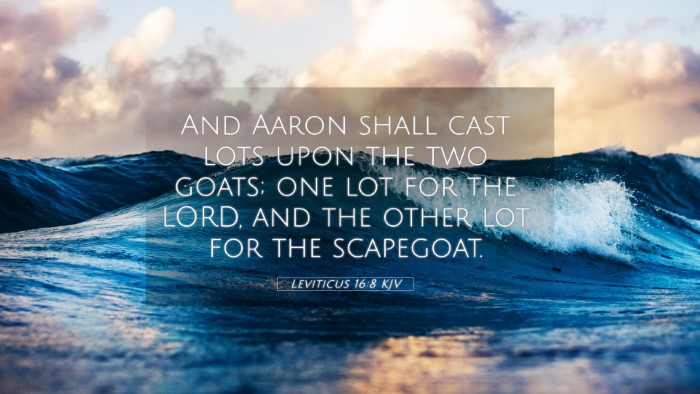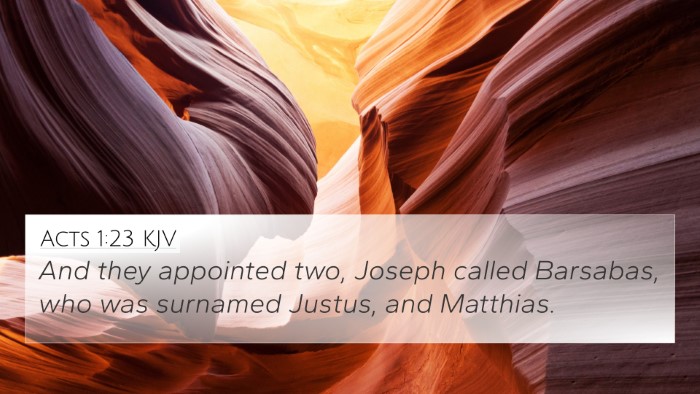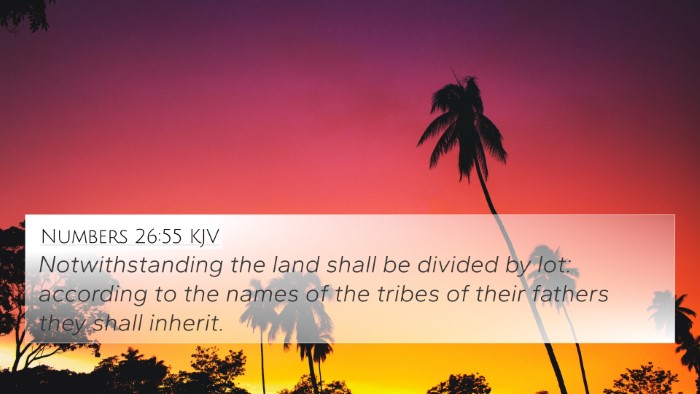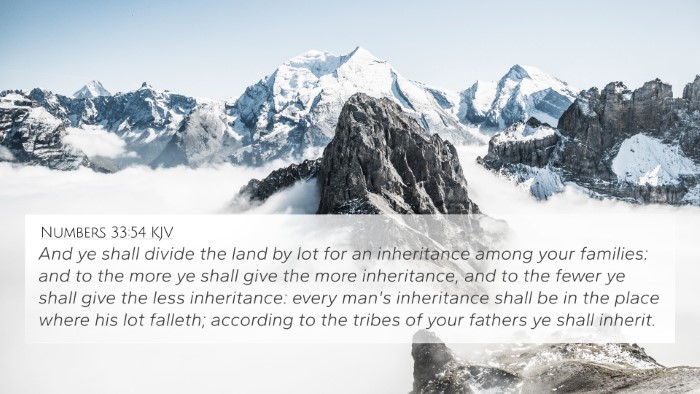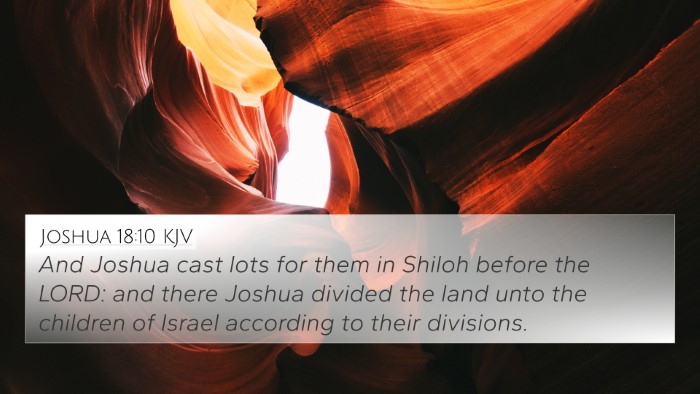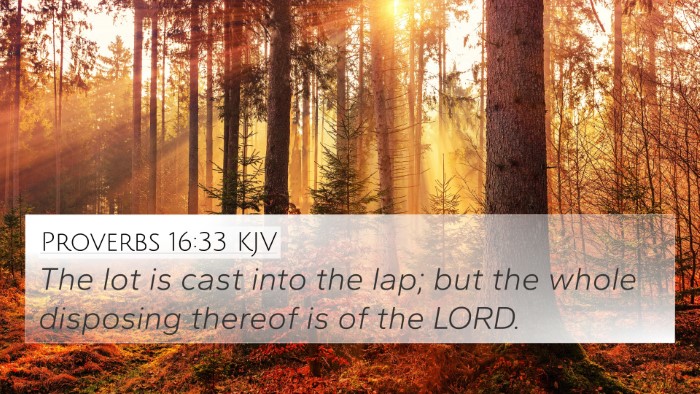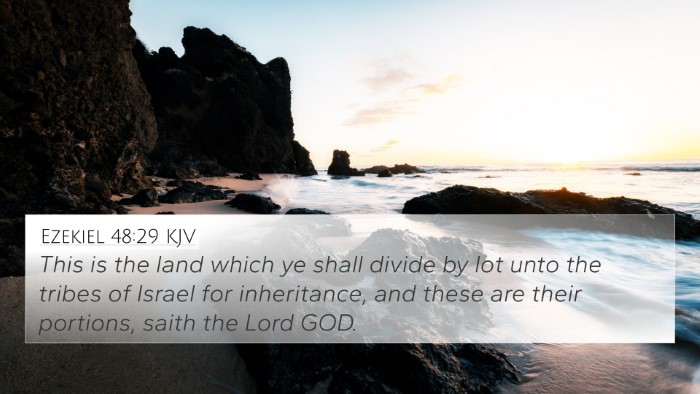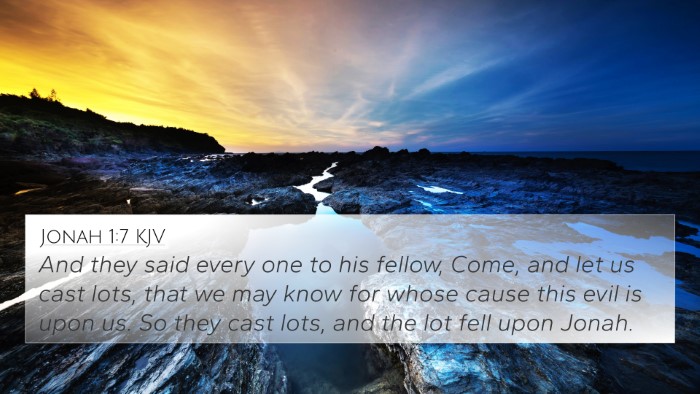Understanding Leviticus 16:8
Leviticus 16:8 states, "And Aaron shall cast lots upon the two goats; one lot for the Lord, and the other lot for the scapegoat." This verse is a pivotal moment in the Day of Atonement ritual, setting the stage for the concepts of sacrifice and atonement that undergird much of the Old Testament sacrificial system.
Summary of Meaning
The casting of lots in Leviticus 16:8 signifies God's sovereign choice in determining which goat would be sacrificed and which would be sent away to symbolize the removal of sin from the community. This ritual highlights the theme of substitutionary atonement, which is essential for understanding how sin is dealt with in the biblical narrative.
Insights from Commentaries
-
Matthew Henry:
Henry emphasizes the significance of the "scapegoat" as a symbol of the sins of the people being carried away. He notes how this duality represents not just the punishment of sin but also the profound mercy of God in providing a means of reconciliation.
-
Albert Barnes:
Barnes points out that the ritual not only illustrates the seriousness of sin but also its separation from God. The two goats signify the dual aspects of God's justice and mercy, underscoring the concept that sin must be dealt with decisively while still allowing for forgiveness.
-
Adam Clarke:
Clarke highlights the procedural importance of casting lots to remove human bias in divine appointments. He argues that this method emphasizes God's direct involvement in the atonement process and serves as a reminder to the Israelites of their dependence on divine providence.
Cross-References to Leviticus 16:8
This verse connects with several other biblical texts that enhance its understanding:
- Exodus 30:10: Discusses the annual atonement ritual carried out by the high priest.
- Hebrews 9:7: Clarifies that the high priest entered the Holy Place once a year with blood, not without blood, which ties the sacrificial system to Christ's work.
- Isaiah 53:6: Prophecies about the suffering servant who bears the sins of many, echoing the theme of atonement.
- Psalm 103:12: Illustrates the removal of sin, connected thematically to the scapegoat being cast away.
- 1 Peter 2:24: Points to Christ bearing our sins in His own body, linking back to the sacrificial system.
- Leviticus 4:24: Discusses the specifics of sin offerings, which correlate with the purpose of the atonement on the Day of Atonement.
- Romans 5:8: Highlights God's love in that while we were still sinners, Christ died for us, mirroring the sacrificial intent behind the goats.
Thematic Connections
Leviticus 16:8 serves as a cornerstone for understanding various biblical themes, particularly:
- Substitutionary Atonement: This theme is essential in both the Old and New Testaments, illustrating how sin is not merely overlooked but must be addressed through the shedding of blood.
- God's Sovereignty: The method of selecting the sacrificial goat emphasizes God's control over the process of atonement, which is reflected in His dealings throughout Scripture.
- Moral Responsibility: The community's acknowledgment of sin through ritual symbolizes the personal and communal aspects of sin and repentance.
Using Cross-References for Deeper Insight
For those looking to study Leviticus 16:8 further, utilizing tools for Bible cross-referencing can shed light on this verse's implications:
- Utilize a Bible concordance to find verses related to atonement.
- Employ a Bible cross-reference guide to explore thematic connections.
- Implement cross-reference Bible study methods to explore interrelated themes.
Conclusion
Leviticus 16:8 is not merely a historical account; it serves as a vital link in the chain of scriptural understanding concerning atonement. Recognizing how this verse interconnects with various bible verse cross-references enriches one's comprehension of both the Old Testament sacrificial system and its ultimate fulfillment in Christ.
Find Additional Cross-References
To enhance your understanding of atonement, explore connections like:
- How to find cross-references in the Bible for deeper study.
- Identifying connections between Old and New Testament understanding of sacrifice.
- Comparative study of Pauline epistles for insights into atonement.

